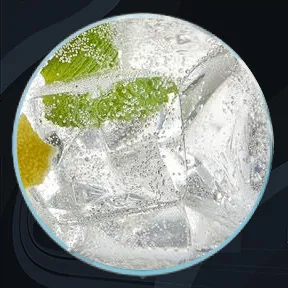Gin & Tonic | 3 Ways
I'm way overdue for a gin & tonic video, so I figured I'd go all out. This episode not only has 3 different recipes of increasing complexity, but also a tasting review of popular gins and tonics.
Classic Gin & Tonic
• 60 ml dry gin (2 oz)
• 120 ml tonic water (4 oz)
• Squeeze of lime wedge
• Add chilled gin to a chilled collins glass
• Tilt glass 45 degrees and gently pour in tonic water
• Add lime juice
• Add ice and straw, and enjoy!
Gin Tónica
• 60 ml Gin Mare gin (2 oz)
• 120 ml Fever Tree Elderflower tonic water (4 oz)
• Squeeze of lime wedge
• 8-10 juniper berries
• 8 strawberry slices
• Fresh sprig of rosemary
• Add chilled gin to a chilled balloon glass
• Tilt glass 45 degrees and gently pour in tonic water
• Add lime juice
• Add ice
• Add in strawberries, juniper berries, and rosemary as garnishes
• Add in julep straw and enjoy!
Aviary’s Gin & Tonic
• 60 ml Junipero Gin (2 oz)
• 15 ml Green Chartreuse (0.5 oz)
• 15ml simple syrup (0.5 oz)
• 1.3 gr citric acid
• 120 ml Fever Tree tonic water (4 oz)
• 80 cucumber spheres (see below)
• Add all ingredients except spheres to a mixing glass and chill to near freezing
• Carbonate drink two times
• Fill up a chilled collins glass a quarter of the way with cucumber spheres
• Tilt glass 45 degrees and gently pour in carbonated cocktail
• Add in a glass straw and enjoy!
Cucumber spheres
• 1L filtered water
• 7.5g sodium alginate
• 4-5 English cucumbers to make 1000g of juice
• 6g kosher salt
• 108g sugar
• 20g calcium lactate
• Combine filtered water and sodium alginate in a large bowl.
• Use immersion blender and blend until no clumps remain and strain.
• Let the slimy liquid sit for at least 1 hour or overnight so that bubbles dissipate.
• Juice the cucumbers or chop and blend them
• Make the cucumber mixture by combining cucumber juice, sugar, salt, and calcium lactate in a bowl. Blend using an immersion blender and let rest until foam dissipates.
• Fill sphere mold about 3/4 to the top of each hole, then freeze solid.
• Prepare 2 bowls of cold water and heat the sodium alginate bath in the microwave for about 30 seconds
• Drop 5-6 frozen spheres into the warm bath, taking care not to let the spheres touch each other. They will start to form a membrane
• After spheres have fully encapsulated, use the spherification spoon to transfer to the first cold bath, rinse, then transfer to the second cold bath. This whole process should take about 30 seconds.
• Carefully transfer the spheres into a container, such as a mason jar, filled with leftover cucumber mixture.
• Try to use within 8 hours.






























